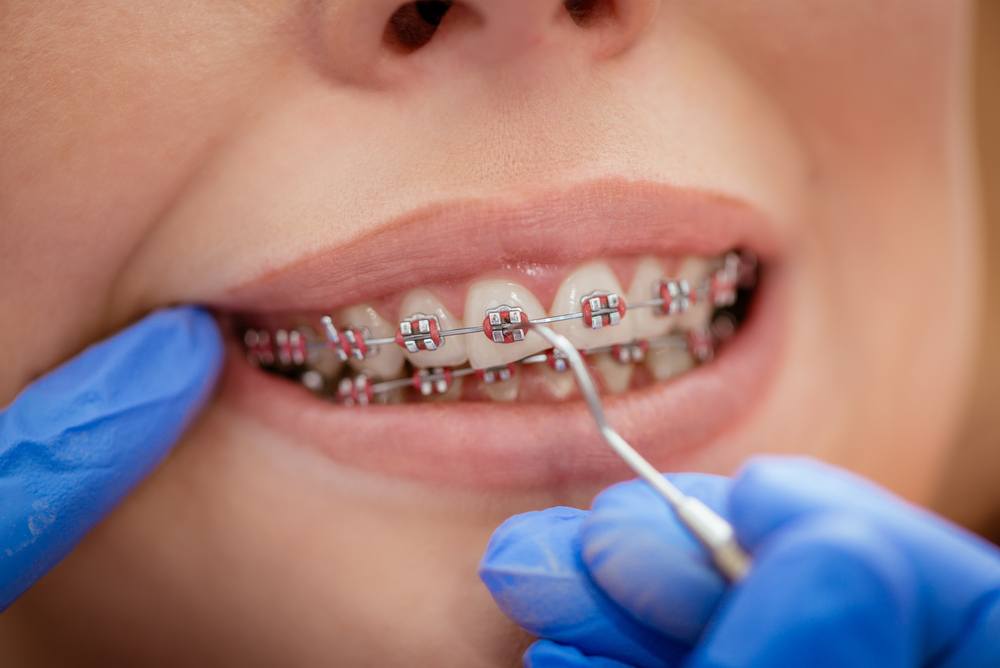How Cumming Orthodontics Can Change Your Smile with Invisalign and Braces
Comprehensive Guide to Orthodontics Treatments for Fixing Oral Imbalances
In the realm of orthodontics, the journey to achieving a flawlessly lined up smile includes a myriad of procedures customized to remedy dental imbalances. From conventional braces to unseen aligners and even medical options, the field of orthodontics supplies a series of remedies to resolve varying degrees of dental abnormalities. Understanding the details of each treatment, including their systems, benefits, and potential drawbacks, is essential in making informed choices about one's orthodontic therapy. As we navigate via the extensive guide to orthodontic procedures for dealing with dental imbalances, the complex information of each technique will certainly unravel, shedding light on the path toward a useful and harmonious dental alignment.
Orthodontic Procedures Overview

In addition to clear aligners and typical braces, orthodontists might likewise advise other interventions like headwear, palatal expanders, or retainers to deal with specific placement issues (orthodontics). These procedures are tailored to every patient's one-of-a-kind requirements and might include a mix of therapies to attain the desired outcomes. Normal adjustments and tracking are essential components of orthodontic therapy to ensure development gets on track and to make any required alterations along the way. By going through orthodontic treatments, people can not only accomplish a straighter grin yet also improve their general dental wellness and function.
Standard Dental Braces: Just How They Function
When taking into consideration orthodontic therapies for dental imbalances, standard braces attract attention as a tried and true technique for correcting teeth placing. Traditional dental braces include braces, cables, and bands that collaborate to apply continuous stress on the teeth, slowly relocating them right into the desired placement. The brackets are affixed to the teeth making use of a special adhesive, and the cords are threaded through the braces. By changing the stress of the cables, orthodontists can regulate the direction and force related to each tooth, directing them right into appropriate alignment gradually.
As pressure is applied to the teeth with the braces, the bone surrounding the teeth is improved to sustain the brand-new tooth settings. Individuals will certainly require normal changes at the orthodontist's workplace to make certain the dental braces proceed to use the proper stress for reliable teeth activity.
Unseen Aligners: Benefits And Drawbacks
These clear, custom-made trays are virtually unnoticeable when used, making them an attractive choice for individuals seeking a more aesthetically pleasing orthodontic therapy. Individuals can remove the aligners click to investigate before consuming or brushing their teeth, reducing the threat of food getting stuck in the appliance and streamlining the cleaning procedure.

Surgical Orthodontic Options
Surgical interventions in orthodontics existing viable alternatives for resolving intricate dental misalignments that may not be effectively solved through traditional orthodontic therapies. While typical braces and invisible aligners can remedy lots of orthodontic problems, certain situations need surgical treatment to accomplish optimal outcomes. Surgical orthodontic alternatives are commonly advised for serious malocclusions, considerable jaw discrepancies, and situations where the underlying bone structure requires adjustment to achieve proper alignment.
One common medical orthodontic procedure is orthognathic surgical procedure, which entails repositioning the jaws to fix practical issues such as difficulty eating or talking. This surgical procedure is typically executed in collaboration with an orthodontist that aids straighten the teeth before and after the procedure. Surgical orthodontics might likewise involve procedures to reveal influenced teeth, hop over to these guys get rid of excess periodontal tissue, or reshape the jawbone to create a more unified face account.
Prior to considering medical orthodontic choices, people undertake a detailed examination to figure out the requirement and prospective advantages of such interventions. braces. While surgical procedure may appear challenging, it can dramatically improve both the feature and looks of the smile in cases where standard orthodontic therapies fail
Retainers and Post-Treatment Treatment

Post-treatment treatment entails following the orthodontist's instructions carefully. This might include proper dental hygiene techniques, going to follow-up appointments, and wearing the retainers as prescribed. Failure to follow post-treatment care directions can lead to regression, where the teeth gradually return towards their original settings. Consistent oral piercings retainer wear, excellent dental hygiene, and routine oral exams are necessary for keeping the results attained through orthodontic surgical procedure and making certain the long-lasting security of the fixed dental placement.
Conclusion
In final thought, orthodontic treatments supply different options for fixing dental misalignments. Surgical orthodontic choices are available for extra extreme imbalances. In general, orthodontic procedures can successfully improve dental health and wellness and visual appearance.
As we navigate via the extensive overview to orthodontic treatments for correcting oral imbalances, the intricate information of each method will unravel, shedding light on the course toward a useful and harmonious oral positioning. - orthodontics
One of the most common orthodontic treatments is the usage of braces, which are composed of steel braces and wires that apply mild stress to progressively move teeth right into the preferred placement.When taking into consideration orthodontic therapies for dental misalignments, standard braces stand out as a tried and true approach for remedying teeth positioning. Additionally, unseen aligners might not be suitable for complicated orthodontic issues that need more substantial teeth movement, as they are generally suggested for mild to moderate instances. Retainers are tailor-made orthodontic devices made to hold teeth in their fixed positions after the completion of orthodontic therapy.